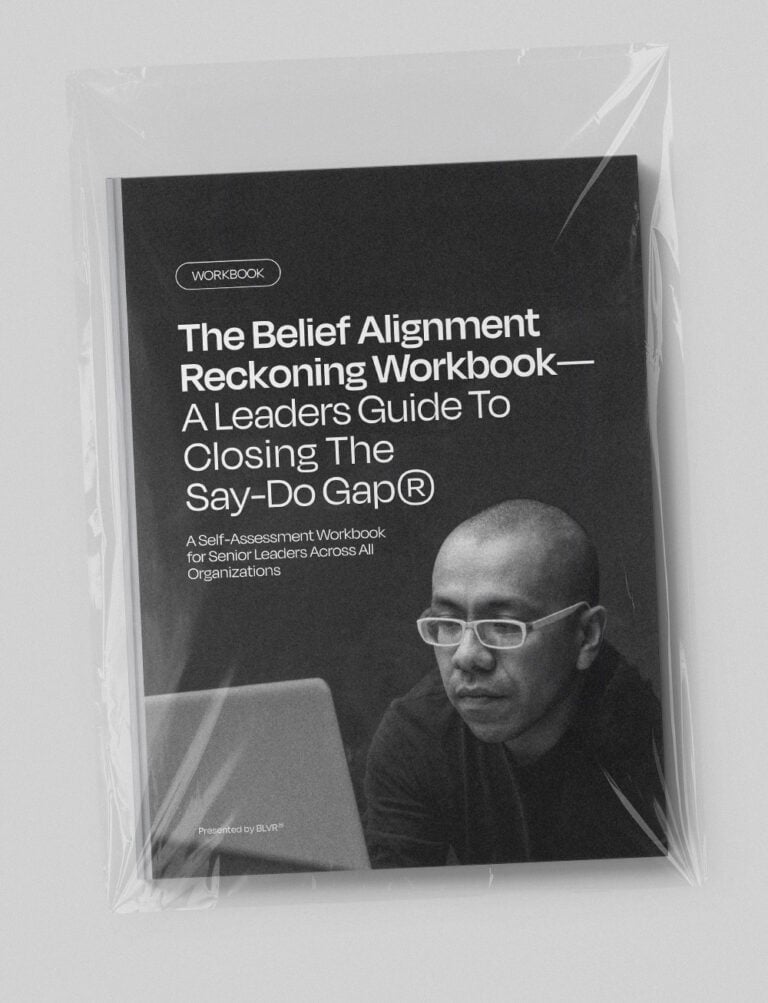
Business Branding / BY Scott Hancock
Pretty Is Cheap: Why Your Brand Needs More Than a New Look
Published On 11.06.2024
Why Brand Obsession Is Destroying Trust
In today’s branding landscape, countless companies are investing millions into making their brands look good. They’re chasing new logos, trendy color palettes, and slick websites, hoping these superficial updates will somehow translate into trust and loyalty. But here’s the hard truth: beauty without backbone is worthless. It might attract a moment of attention, but it won’t build real loyalty. Today’s customers see through the gloss, and if all they find is surface, they’ll walk away without a second thought.
The old branding playbook—which relies on polished appearances to inspire trust—is not just outdated; it’s dangerous. People don’t trust what’s pretty; they trust what’s real. And what’s real is built on substance. According to the 2023 Edelman Trust Barometer, 88% of consumers say that trust is essential to their loyalty. But that trust is fragile, especially when a brand’s actions don’t align with its appearance. Authentic brand integrity starts with a core belief that shows up consistently in every decision, action, and experience. If your brand isn’t prepared to be more than pretty, it’s only a matter of time before it fades into irrelevance.
The Problem: The Aesthetic Trap and the Say-Do Gap®
The reason so many rebrands fall flat is simple: they treat the symptom, not the disease. Brands hope that by refreshing their look, they’ll feel renewed. They think that a new design can help them appear relevant, but people see through it. Customers know when a brand is all show and no substance. And once they sense that your look doesn’t match your actions, it’s game over.
This disconnect between what a brand says and what it actually does is what we call the Say-Do Gap®. Make no mistake—this gap is a silent brand killer. Every inconsistency, every broken promise chips away at trust. And without trust, a brand is just another pretty face in the crowd.
If your brand can’t close this gap, it’s more than a branding issue—it’s a fundamental existential threat. At best, the Say-Do Gap® drives away customers. At worst, it creates disillusioned employees and leaders who can’t defend or stand by what the brand claims to be. If your brand’s foundation is fragile, no amount of surface polish will save it.
The Solution: Building a Brand on Belief, Not Just Beauty
So, if superficial aesthetics won’t cut it, what will? The brands that stand the test of time don’t rely on appearance to build trust; they rely on Behavioral Brand Integrity—a commitment to ensuring that every decision, policy, and interaction aligns with core values. At BLVR®, we call this approach the Values-in-Action Framework. This isn’t about slogans or mission statements—it’s about translating beliefs into actions that customers can see, feel, and believe in.
Here’s what that looks like in practice:
- Values come first, design comes second. Design should express your beliefs, not cover up a lack of them. If your values aren’t strong enough to dictate every brand touchpoint, no design in the world will create real trust.
- Actions over aesthetics. Customers connect with brands that prove their values in tangible ways. Every aspect of your brand—from customer service to sourcing decisions—needs to reflect what you say you stand for.
- Consistency over trendiness. Trends fade, but consistency endures. Brands built on belief don’t chase what’s current; they stay true to what’s real and essential to their core mission.
If you’re serious about building an enduring brand, start by asking: Do we look like what we believe, or are we just playing dress-up?
The Values-in-Action Framework: How to Transform Belief into Unbreakable Brand Integrity
Building a belief-led brand goes beyond defining values; it requires operationalizing those values until they’re part of every decision, every action, every experience. Here’s a look at how the Values-in-Action Framework can help ensure your brand isn’t just talking about its beliefs but living them.
Step 1: Internalize Your Core Values—Don’t Just Define Them
It’s easy to throw around terms like “integrity” or “innovation,” but hollow values are worse than no values at all. To make values actionable, they need to be internalized by every employee, from leadership to front-line workers. If your team doesn’t feel those values in their day-to-day work, neither will your customers.
Action Item: Hold workshops with every department to translate values into practical terms that apply to their specific roles. Challenge leaders to ask, “If we took away all visuals, would people still know who we are by how we act?”
Step 2: Implement Consistency Checkpoints in Customer and Employee Experience
Trust isn’t built on what you say; it’s built on how you show up over time. Salesforce’s State of the Connected Customer Report reveals that 71% of consumers expect consistent, reliable interactions with brands. Consistency checkpoints allow your brand to remain accountable, ensuring that every interaction reflects your core beliefs. When consistency fails, so does trust.
Action Item: Establish regular checkpoints to audit customer and employee experiences. Use key performance indicators (KPIs) to evaluate whether each aspect of the brand experience aligns with your values, from product quality to communication style.
Step 3: Conduct Rigorous Say-Do Gap® Audits
The Say-Do Gap® isn’t a one-time fix; it’s a continuous commitment to evaluation and accountability. A brand with integrity constantly asks, Where are we falling short? and What needs to change? Closing this gap requires routine audits to ensure actions align with promises.
Action Item: Schedule quarterly Say-Do Gap® audits. Engage both employees and customers to measure whether their experience matches the brand’s stated beliefs. Use this feedback to adjust and reinforce alignment, keeping your brand on track.
The Consequences of Ignoring Real Alignment: The Cost of a Hollow Brand
What happens if you ignore this process and keep chasing the “pretty” trap? You risk building a brand that’s brittle—one that shatters the moment it’s tested. When your brand promises one thing but delivers another, it doesn’t just lose customers; it loses credibility, employees, and trust—all the elements that keep a brand alive.
Brands that can’t align their actions with their words end up alienating both customers and employees. This isn’t just about image anymore; it’s about the core of your organization. Every inconsistency becomes a liability, and every broken promise erodes not only consumer trust but the integrity of the brand itself. And trust, once lost, is nearly impossible to regain.
The Payoff of Behavioral Brand Integrity: Why Brands Built on Belief Last
Brands that invest in deep, values-based alignment earn something far more valuable than a passing glance—they earn loyalty, respect, and longevity. Here’s what happens when you go beyond “pretty” and commit to a brand of integrity:
- You gain advocates instead of mere customers: Customers become advocates when they see a brand that stands for something real. Advocates don’t just buy—they believe, defend, and amplify your brand.
- Your culture becomes cohesive and purpose-driven: A brand built on values fosters loyalty from the inside out. Employees aren’t just aligned; they’re invested, creating a culture that drives resilience, loyalty, and a shared purpose.
- You achieve sustainable success over fleeting trends: Fads come and go, but brands built on belief become part of the culture. They survive market shifts and stay relevant because they’re anchored in something timeless.
Consider Cotopaxi, the outdoor brand that has built its identity around social impact and sustainable production. Cotopaxi doesn’t just claim to be socially responsible—it embeds its values into every part of the business. Their “Gear for Good” mission shows up in their use of sustainable materials, ethical manufacturing, and their commitment to funding global poverty alleviation. Customers don’t just buy Cotopaxi gear; they buy into Cotopaxi’s vision. This level of integrity means Cotopaxi’s brand is more than a product line; it’s a promise—one they live out. And that’s why people trust them.
Reflection for Leaders: Is Your Brand Built to Last?
If your brand’s identity relies on its visual appeal alone, it’s already on shaky ground. True brand integrity means that if you were to remove the logo, strip away the color scheme, and take away the slogans, people would still know who you are by how you behave, by how you treat them, and by the values you live out in every single interaction.
Ask yourself: Are you ready to move beyond “pretty” and commit to something meaningful? In a world where the average brand lifespan is shrinking, relying solely on aesthetics is a game of diminishing returns. Real loyalty, real impact, and real success come from aligning every aspect of your brand with a core belief that’s unshakable.
Your Brand’s Moment of Truth
In today’s world, “pretty” is easy, but authenticity is priceless. The brands that endure aren’t the ones with the jazziest visuals but those willing to do the work of Behavioral Brand Integrity, closing the Say-Do Gap® by living their core belief every single day.
So, what will your brand stand for when the spotlight fades? And more importantly—will it stand at all?
IS YOUR BRAND BUILT ON CONVICTION OR CONVENIENCE?
Most brands talk about purpose.
Few are willing to pay the price for it.
This 45-minute assessment will reveal the hidden contradictions costing you customer trust, team alignment, and market authenticity. Discover where your beliefs and actions diverge—and get the practical framework to close the gap that’s holding your brand back.

About the Author

Scott Hancock
Partner / CEO
Scott Hancock is a thought leader in belief-driven branding and an expert in closing the Say-Do Gap®—the critical divide between what brands say and what they actually do. As CEO of BLVR®, Scott has pioneered a belief-led approach that helps organizations transform their core conviction into bold actions that inspire trust, loyalty, and market leadership.
With a reputation for pushing brands to go beyond surface-level promises, Scott’s work has been recognized by AdWeek, Forbes, and Fast Company for its fearless creativity and impactful results. His leadership has empowered BLVR® to become a trusted partner for purpose-driven brands seeking to align their actions with their core belief and create lasting change.




